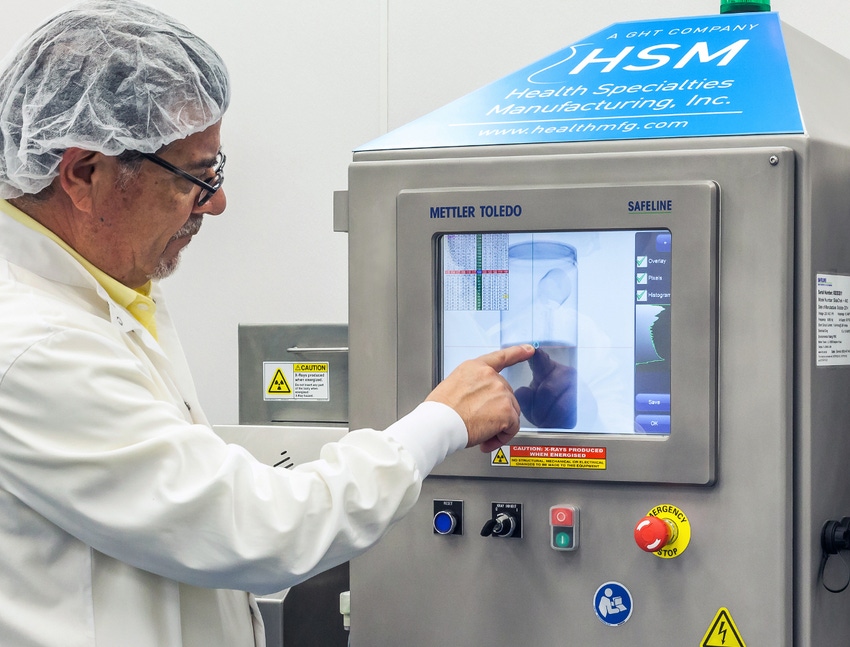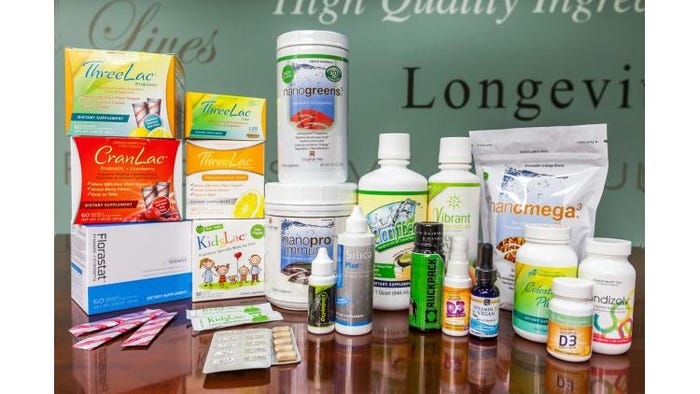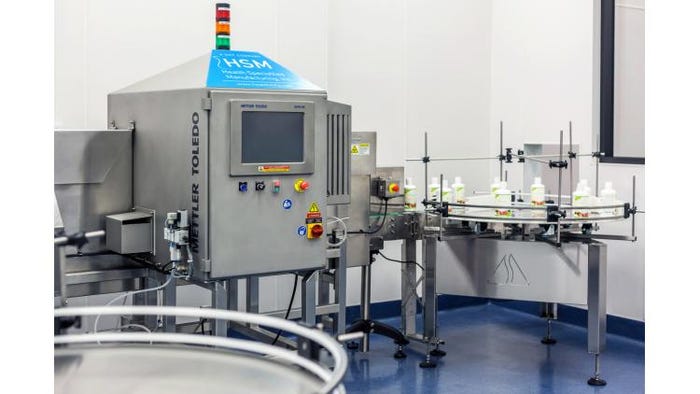X-ray inspection gives health products maker ‘peace of mind’
November 12, 2015

Health Specialties Manufacturing switched to an x-ray inspection system to ensure product safety and quality—and gained production flexibility at the same time.
The mission of The GHT Companies is to work globally with its founding scientists to bring raw ingredient and nutritional product discoveries to commercial markets. This includes the delivery of progressive formulations for optimal wellness, longevity and an improved quality of life for people around the world.
Founded in 1997, the mid-size group of companies in Vista, CA, consists of Global Health Trax, Health Specialties Manufacturing, Vibrant Nutraceuticals and Green Leaf Sciences. The manufacturing business unit, Health Specialties Manufacturing (HSM), employs about 30 people and runs one shift per day, five or six days a week. It is cGMP-certified, sports-certified and licensed by Health Canada.
HSM formulates and produces branded products for its sister companies, which includes, but is not limited to probiotics, enzymes, vitamins and joint-muscle blends. It also formulates and produces private label lines for global customers, and has produced unique vegan-qualified products for select markets.
“We’re known for being flexible and are always looking for what is cutting edge in the industry,” says Ernesto Mejia, director of quality control and assurance (QC/QA) and research and development (R&D) at The GHT Companies. “I am very involved with developing products. We help customers with small volumes, assist them with R&D or supply our own formula,” he reports.
An expanding product lineup, expansion of global customers and rising sales volume keep the plant consistently busy throughout the year. To ensure product quality, The GHT Companies relies on x-ray inspection and installed a standalone Safeline SideChek x-ray inspection system from Metter Toledo Safeline in January 2015.
Unlike some x-ray systems, the SideChek x-ray unit does not require water cooling and related plumbing, thereby simplifying installation. The IP65-rated machine features a 360-watt x-ray generator and 12-inch-tall inspection area and meets CE standards. The unit detects and automatically rejects product with contaminants as small as 0.2mm, including metal, stone, glass and bone. A maximum speed of 600 feet per minute translates into up to 1,200 inspections per minute.
“We are very proud of our products,” says Mejia. “The investment in the x-ray system shows we care about the safety of our products.”
No longer ‘foiled’ by metal
The SideChek x-ray inspection system replaced a metal detector, which remains in use for products that don’t need the broader detection capabilities of x-ray inspection.
The range of branded and private label products manufactured by HSM include complex liquate and powder blends in all types of packaging formats, as dictated by the customer and the logistics/characteristics of the product.
The SideChek x-ray system is able to inspect packaging with foil laminations, which can confuse metal detection systems and result in inefficiencies. “If we were using metal detection, we would need to inspect product before sealing,” explains Mejia. “But we believe inspecting the package after it is sealed is essential to maximize product quality.”
Mejia first learned about x-ray inspection at the Pack Expo trade show. He recalls: “We use a foil lamination for seals. With metal detection that’s a problem. With an x-ray system you can inspect a sealed or capped product. Everything started from there. Mettler Toledo Safeline was able to deliver what we wanted, and management was willing to make the financial commitment. There’s a big price difference between metal detection and x-ray equipment, but management is open to my recommendations and made the commitment because metal detection had difficulty efficiently checking products with iron content, an oxygen scavenger or a pump with a metal spring. X-ray systems can detect non-metal as well as metal contaminants and check other attributes. For example, in a canister of powder, it can confirm the presence of a scoop and desiccant pouch. An x-ray system also can check fill level. If a container isn’t filled to specifications, the machine can be programmed to provide an alert. This broad capability is what’s unique with x-ray.”
The SideChek x-ray inspection system was purchased through Pacific Packaging and Inspection (949-285-5795), Ontario, CA, an independent sales representative for Mettler Toledo Safeline. “The machine had to inspect an array of products at the final packaging level,” recalls Kirk Isham, sales representative at PPI. “The GHT Companies wanted to inspect products for foreign contaminants plus have the ability to ensure that fill levels are correct and all components are present,” he explains. “X-ray was the only way to meet this range of needs.”
Mejia reports, “Kirk Isham has been very helpful from the beginning. He has a great relationship with Mettler Toledo Safeline and put me in contact with its engineering department. One of the engineers, Wyeth Thomas, western regional sales manager, visited and described what the SideChek x-ray system could do. I explained I wanted one machine that could inspect everything. I didn’t want to be limited. Mettler Toledo Safeline then performed a full test with all of our different products and different size packaging and designed the system to work with all the types of products we currently produce. Nothing was left unanswered. Kirk always followed up with whatever we needed.”
One system performs for three lines
The SideChek x-ray system inspects product from all three packaging lines. Plastic bottle sizes range from 1 inch in diameter by 3 inches high to 3.5 inches in diameter by 10 inches high. “My Safeline SideChek unit is big enough to inspect packages ranging from 1 ounce to 1 gallon. I’m very pleased with it,” says Mejia.

Health Specialties Manufacturing uses the x-ray system to inspect a range of products, and in various package formats.
Product arrives in the x-ray room via conveyor. The x-ray scan matches the line speed with a one-to-one image ratio. Multiple wall openings allow product to arrive from one of the packaging lines or from storage and exit to secondary packaging where it is manually loaded into cases. Filled cases are manually palletized.
When it came time to install the system, training followed HSM’s standard operating procedures. During installation an engineer and technician from Mettler Toledo Safeline spent two days teaching operators, supervisors and the quality control team how the machine works and explained all facets of the system.
The software and touchscreen operator interface make the x-ray inspection system easy to operate. Recipes also simplify setup and operation. Cleaning and sanitation requirements are minimal since all incoming product is sealed. In addition, virtually no in-house maintenance is required. “Mettler Toledo Safeline performs the annual calibration and maintenance program and did all the safety testing,” reports Mejia.
Safety features are built in. He says, “If someone opens a cover, the machine shuts down. We have no concerns.”
Since installation in January 2015, there have been no issues with false rejects. “The machine is very accurate. The unit is programmable, and we can set the detection parameters,” Mejia says. “We are able to check why a package was rejected.”
Mejia appreciates the equipment’s CE certification. “It is important. It gives us the assurance that the equipment meets standards and helps with our own certification.”
It also confirms the equipment performs according to specifications. “There’s more and more demand for third-party certification and assurance of compliance with regulations,” he notes.
With just one x-ray system and multiple packaging lines, inspection sometimes creates a bottleneck. As a result, Mejia says, “we may buy a second unit. The Safeline SideChek x-ray system gives us peace of mind,” he concludes.

Incoming product accumulates on a turntable before entering the infeed of the SideChek x-ray inspection system.
Hallie Forcinio, principal of Forcinio Communications, has expertise in packaging technologies and environmental issues. Prior to founding the company in 1993, Forcinio worked for 10 years in various editorial positions with a U.S. business-to-business packaging magazine. She also co-authored the third edition of the Handbook of Package Engineering.
About the Author(s)
You May Also Like


